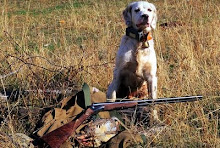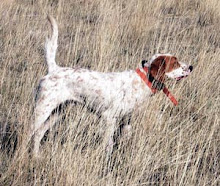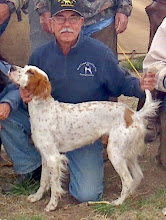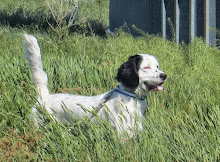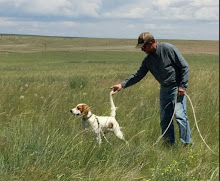
The
American Field has an article in the March 15th edition by Mark Neff, PhD. of the Center for Veterinary Genetics, School of Veterinary Medicine at the University of California at Davis. The article,
Genetics and the Natural History of Pointing, backgrounds the development of modern breeds, and pointing breeds in particular. Dr. Neff worked on the first Dog Genome Project at UC Berkeley.In the article he describes his current project to identify the major genes that contribute to pointing behavior. The genetic code of dogs was deciphered by a team from MIT and Harvard in 2005. This has provided geneticists with the coordinates of every gene in the canine genome.
According to Dr. Neff, the National Institutes of Health has a great interest in biological models of behavioral variation. This is well displayed in dogs, especially when looking at variations in pointing behavior between breeds and individuals within a breed. Rather than try to summarize this excellent article, I prefer to quote some interesting comments made by Dr. Neff:
"The variation in pointing intensity that is observed today among breeds suggests an historical path that pointing genes took across Europe. Spanish and Italian dogs, for instance, exhibit a less intense point than English pointers (sic.) and setters. The former breeds may represent the origins of the instinct, whereas the later breeds may represent the full set of intensifying genes added over time."
"Samples from privately owned dogs is currently being recruited. We have classified breeds in a way that we believe reflects degrees of common ancestry and gene-sharing. The first class consists of breeds in which pointing instinct has been bred to fixation, such that all the dogs possess strong instinct... The second class consists of breeds with variation in pointing instinct. Only the very best dogs are being recruited from these breeds. The third class consists of breeds with an even smaller fraction of dogs possessing true talent. These tend to be breeds that have become popular in the show ring, where just a few bloodlines appear to have retained the major pointing genes... These pointing genes are detectable with new DNA technologies that provide unprecedented power and resolution. " The reason for this, according to Dr. Neff is to develop study groups with sufficient genetic variation to allow identification of the genes associated with pointing behavior.
Dr. Neff also poses these interesting questions, which may begin to be unraveled if his research is successful...
"What was the antecedent behavior in the wolf from which pointing was derived?"
"Are there early experiences or environmental influences that strengthen the behavioral outcome?"
"Are there predictors of pointing intensity in puppies?"
Dr. Neff is soliciting DNA samples for the study. He may be reached via e-mail at: mwneff@ucdavis.edu




